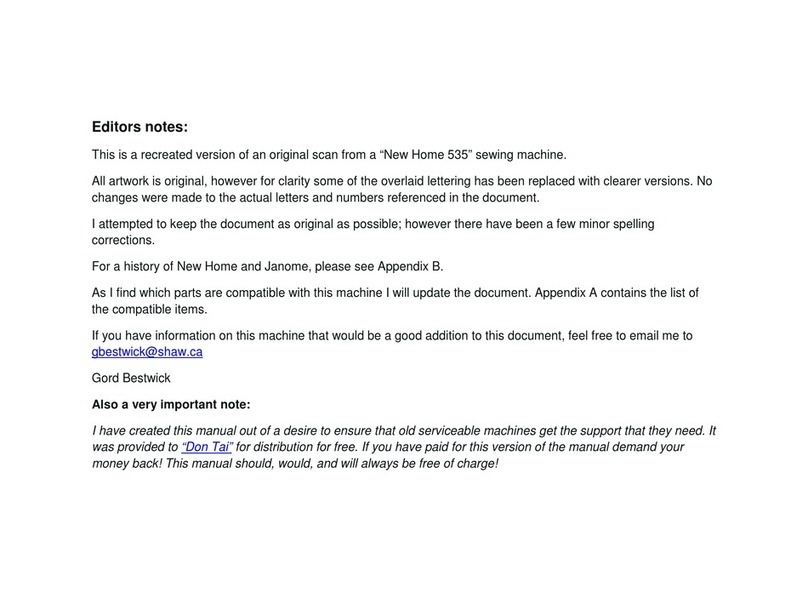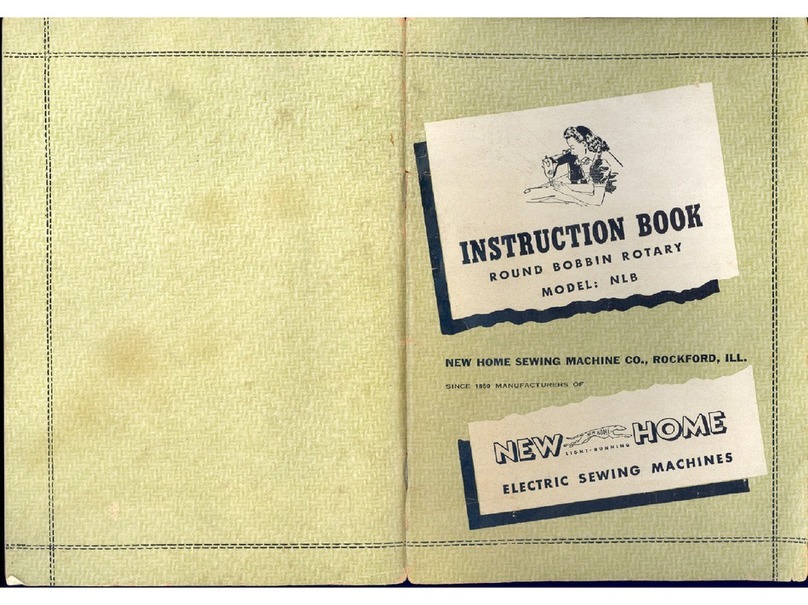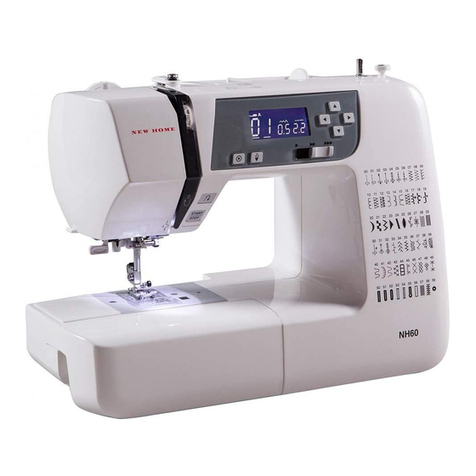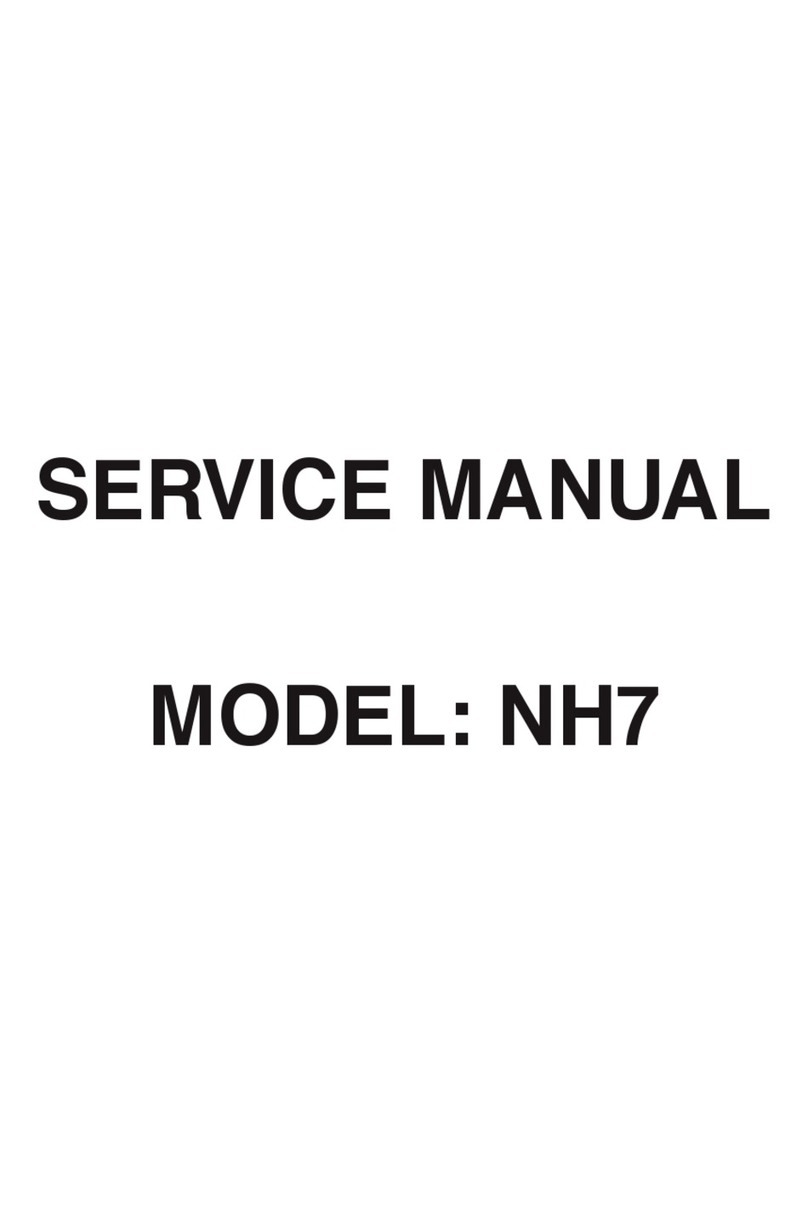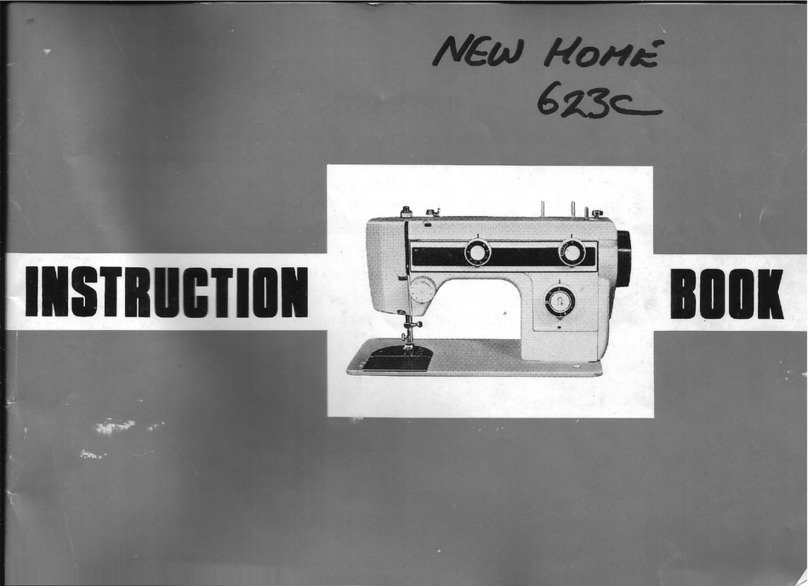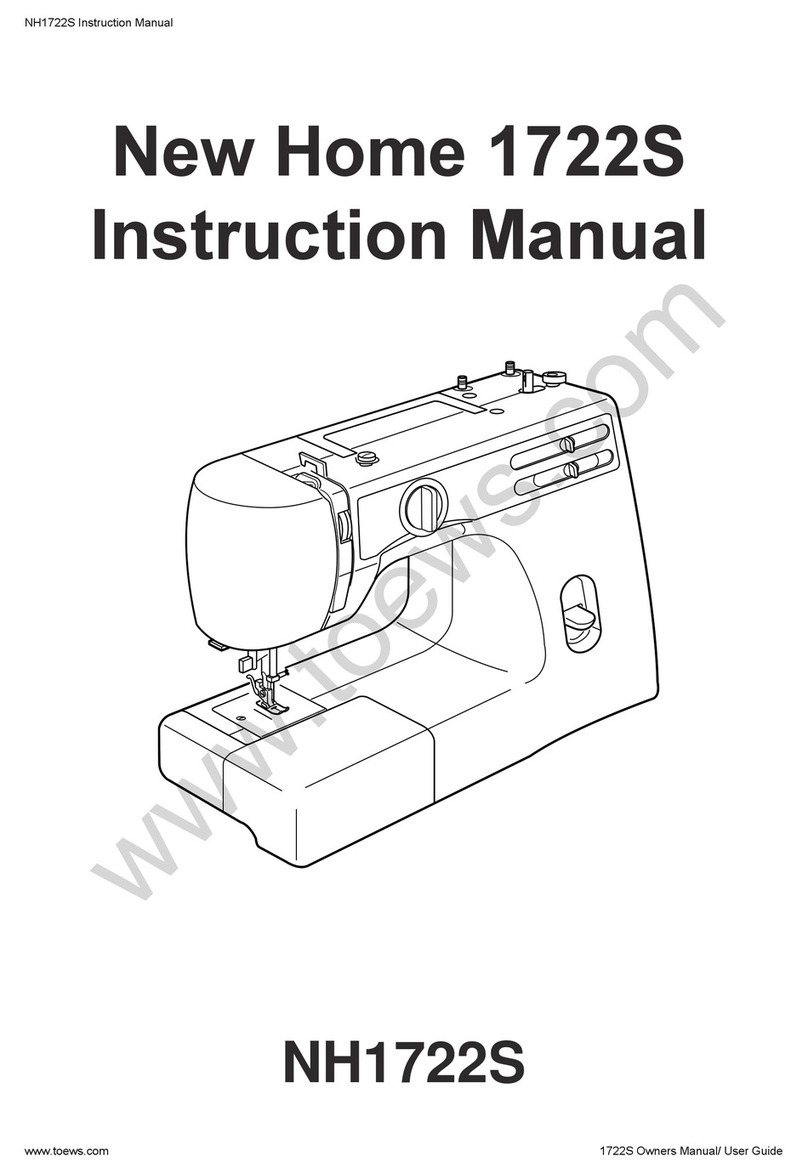New Home 1712S User manual

AAASewing.com
New Home
1712S & 1718S
Instruction Manual
NH1712S/1718S
New Home Instruction Manual
www.aaasewing.com
NH1712S & 1718S Owners Manual/ User Guide

AAASewing.com
IMPORTANT SAFETY INSTRUCTIONS
When using an electrical appliance, basic safety precautions should always be followed, including the
followings:
Read all instructions before using this appliance.
DANGER— To reduce the risk of electric shock:
1. An appliance should never be left unattended when plugged in. Always unplug this sewing machine from the
electric outlet immediately after using and before cleaning.
2. Always unplug before replacing a sewing machine bulb. Replace bulb with same type rated 15 Watts.
WARNING—To reduce the risk of burns, fire, electric shock, or injury to persons:
1. Do not allow to be used as a toy. Close attention is necessary when this sewing machine is used by or near
children.
2. Use this appliance only for its intended use as described in this owner’s manual.
Use only attachments recommended by the manufacturer as contained in this owner’s manual.
3. Never operate this sewing machine if it has a damaged cord or plug, if it is not working properly, if it has been
dropped or damaged, or dropped into water.
Return this sewing machine to the nearest authorized dealers or service center for examination, repair, electrical
or mechanical adjustment.
4. Never operate the appliance with any air opening blocked. Keep ventilation openings of this sewing machine and
foot controller free from accumulation of lint, dust and loose cloth.
5. Never drop or insert any object into any opening.
6. Do not use outdoors.
7. Do not operate where aerosol (spray) products are being used or where oxygen is being
administered.
8. To disconnect, turn all controls to the off (“O”) position, then remove plug from outlet.
9. Do not unplug by pulling on cord. To unplug, grasp the plug, not the cord.
10. Keep fingers away from all moving parts. Special care is required around the sewing machine needle.
11. Always use the proper needle plate. The wrong plate can cause the needle to break.
12. Do not use bent needles.
13. Do not pull or push fabric while stitching. It may deflect the needle causing it to break.
14. Switch this sewing machine off (“O”) when making any adjustment in the needle area, such as threading the
needle, changing the needle, threading the bobbin or changing the presser foot, and the like.
15. Always unplug this sewing machine from the electrical outlet when removing covers, lubricating, or when making
any other adjustments mentioned in this owner’s manual.
SAVE THESE INSTRUCTIONS
New Home Instruction Manual
www.aaasewing.com
NH1712S & 1718S Owners Manual/ User Guide

AAASewing.com
SECTION 1. ESSENTIAL PARTS ..................2
Name of Parts ........................................................2
SECTION 2. GETTING READYTO SEW.......3
Extension Table......................................................3
Accessories Storage Box .......................................3
Standard Accessories ............................................4
Connecting the Machine to the Power Supply .......5
Presser Foot Lifter..................................................6
To Attach and Remove the Presser Foot ...............6
Changing Needle ...................................................7
To check the needle ...............................................7
Selecting needle and fabric....................................7
Setting Spool Pins..................................................8
Removing or Inserting the Bobbin Case ................8
Winding the Bobbin ................................................9
Threading Bobbin Case .........................................9
Threading the Machine ........................................10
Needle Threader .................................................. 11
Drawing Up Bobbin Thread.................................. 11
Balancing Needle Thread Tension .......................12
Adjusting Bobbin Thread Tension ........................12
Pattern Selector Dial ............................................13
Stitch Length Control............................................13
Stitch Width Control .............................................13
Reverse Stitch Button ..........................................14
Dropping the Feed Dog........................................14
SECTION 3. BASIC SEWING ......................15
Straight Stitch Sewing ..........................................15
To Change Sewing Direction................................15
Using the Seam Guides on the Needle Plate.......16
Turning Square Corners.......................................16
Variable Needle Position ......................................16
Zigzag Stitching....................................................17
SECTION 4. UTILITY STITCHING ............... 17
Overcasting .......................................................... 17
Tricot Stitch .......................................................... 18
Knit Stitch ............................................................. 18
Straight Stretch Stitch .......................................... 19
Sewing on Buttons ............................................... 20
Buttonhole ....................................................... 21-22
Corded Buttonhole ............................................... 23
Zipper Application................................................. 24
Blind Stitch Hemming........................................... 25
SECTION 5. DECORATIVE STITCHING ..... 26
Shell Tuck............................................................. 26
Stretch Stitch Patterns ......................................... 26
Smocking ............................................................. 27
Box Stitching (NH1718S exclusive)...................... 27
Applique ............................................................... 28
Decorative Satin Stitch Pattern
(NH1718S exclusive)............................................ 28
SECTION 6. CARE OFYOUR MACHINE.... 29
Dismantling and Assembling................................ 29
Hook Race Unit .................................................... 29
Cleaning the Feed Dog ........................................ 29
Sewing Light......................................................... 30
Troubleshooting ................................................... 31
TABLE OF CONTENTS
New Home Instruction Manual
www.aaasewing.com
NH1712S & 1718S Owners Manual/ User Guide

AAASewing.com
2
qReverse stitch button
wPattern selector dial
eStitch width control
rStitch length control
tBobbin winder stopper
yBobbin winder spindle
uSpool pins
iBobbin winder thread guide
oThread guide
!0 Thread take-up lever
!1 Thread tension dial
!2 Face plate
!3 Thread cutter
!4 Needle threader (Model NH1718S exclusive)
!5 Needle plate
!6 Presser foot holder
!7 Needle clamp
!8 Needle
!9 Presser foot
@0 Extension table
@1 Carrying handle
@2 Handwheel
@3 Power switch
@4 Machine socket
@5 Free arm
@6 Buttonhole lever
@7 Presser foot lifter
SECTION 1. ESSENTIAL PARTS
Name of Parts
1
2
3
4
5
6
78
9
10
11
12
13
14
15
16
17
18
19
20
21
22
23
24
25
26
27
New Home Instruction Manual
www.aaasewing.com
NH1712S & 1718S Owners Manual/ User Guide

AAASewing.com
3
Extension Table
The extension table provides added sewing surface
and can be easily removed for free arm sewing.
Detaching the table:
Pull the table away from the machine.
Attaching the table:
Push the extension table until it snaps into the
machine.
•Advantages and uses of free arm
—Avoid fabric bunching around the needle when bartacking
to reinforce pockets, plackets and waistlines.
— For stitching sleeves, waistbands, pant legs or any
circular garment area
—For darning socks or mending knees, elbows or areas of
wear in children's clothes
SECTION 2. GETTING READY TO SEW
Accessories Storage Box
Sewing accessories are conveniently located in the extension
table.
qAccessories storage box
1
New Home Instruction Manual
www.aaasewing.com
NH1712S & 1718S Owners Manual/ User Guide
This manual suits for next models
1
Table of contents
Other New Home Sewing Machine manuals
